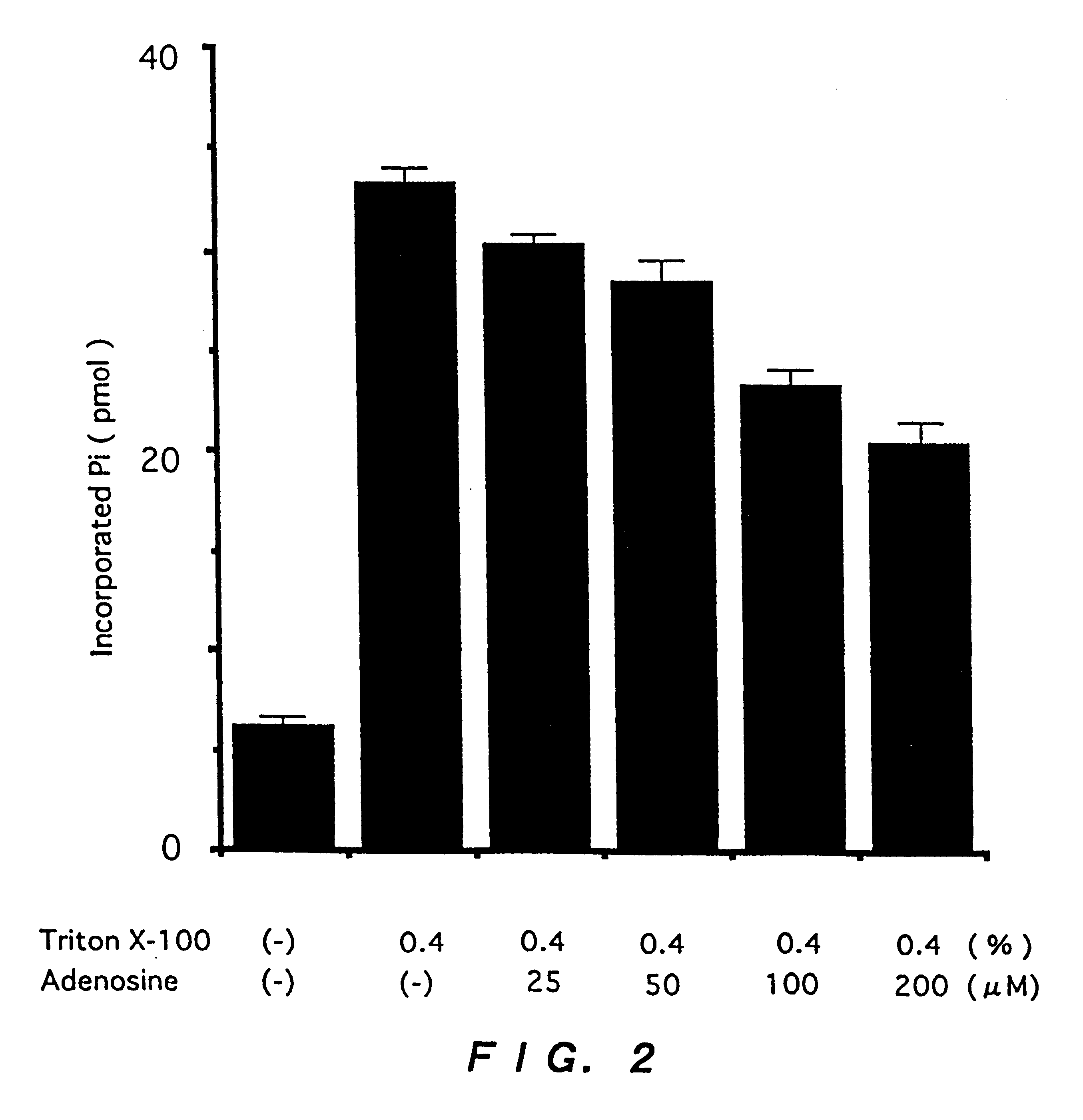Method for detecting expression of human skeletal muscle-specific unbiquitin-conjugated enzyme
- Summary
- Abstract
- Description
- Claims
- Application Information
AI Technical Summary
Benefits of technology
Problems solved by technology
Method used
Image
Examples
example 1
GDP Dissociation Stimulator Gene
1) Cloning and DNA Sequencing of GDP Dissociation Stimulator Gene
mRNAs extracted from the tissues of human fetal brain, adult blood vessels and placenta were purchased from Clontech and used as starting materials.
cDNA was synthesized from each mRNA and inserted into the vector .lambda.ZAPII (Stratagene) to thereby construct a cDNA library (Otsuka GEN Research Institute, Otsuka Pharmaceutical Co., Ltd.)
Human gene-containing Escherichia coli colonies were allowed to form on agar medium by the in vivo excision technique [Short, J. M., et al., Nucleic Acids Res., 16, 7583-7600 (1988)]. Colonies were picked up at random and human gene-containing Escherichia coli clones were registered on 96-well micro plates. The clones registered were stored at -80.degree. C.
Each of the clones registered was cultured overnight in 1.5 ml of LB medium, and DNA was extracted and purified using a model PI-100 automatic plasmid extractor (Kurabo). Contaminant Escherichia coli ...
example 2
Cytoskeleton-associated Protein 2 Gene (CKAP2 Gene)
(1) Cytoskeleton-associated Protein 2 Gene Cloning and DNA Sequencing
cDNA clones were arbitrarily chosen from a human fetal brain cDNA library in the same manner as in Example 1 were subjected to sequence analysis and, as a result, a clone having a base sequence containing the CAP-glycine domain of the human cytoskeleton-associated protein (CAP) gene and highly homologous to several CAP family genes was found and named GEN-080G01.
Meanwhile, the cytoskeleton occurs in the cytoplasm and just inside the cell membrane of eukaryotic cells and is a network structure comprising complicatedly entangled filaments. Said cytoskeleton is constituted of microtubules composed of tubulin, microfilaments composed of actin, intermediate filaments composed of desmin and vimentin, and so on. The cytoskeleton not only acts as supportive cellular elements but also isokinetically functions to induce morphological changes of cells by polymerization and de...
example 3
OTK27 Gene
(1) OTK27 Gene Cloning and DNA Sequencing
As a result of sequence analysis of cDNA clones arbitraily selected from a human fetal brain cDNA library in the same manner as in Example 1 (1) and database searching, a cDNA clone, GEN-025F07, coding for a protein highly homologous to NHP2, a yeast nucleoprotein [Saccharomyces cerevisiae; Kolodrubetz, D. and Burgum, A., YEAST, 7, 79-90 (1991)], was found and named OTK27.
Nucleoproteins are fundamental cellular constituents of chromosomes, ribosomes and so forth and are thought to play an essential role in cell multiplication and viability. The yeast nucleoprotein NHP2, a high-mobility group (HMG)-like protein, like HMG, has reportedly a function essential for cell viability [Kolodrubetz, D. and Burgum, A., YEAST, 7, 79-90 (1991)].
The novel human gene, OTK27 gene, of the present invention, which is highly homologous to the above-mentioned yeast NHP2 gene, is supposed to be similar in function.
The nucleotide sequence of said GEN-025F...
PUM
 Login to View More
Login to View More Abstract
Description
Claims
Application Information
 Login to View More
Login to View More - R&D
- Intellectual Property
- Life Sciences
- Materials
- Tech Scout
- Unparalleled Data Quality
- Higher Quality Content
- 60% Fewer Hallucinations
Browse by: Latest US Patents, China's latest patents, Technical Efficacy Thesaurus, Application Domain, Technology Topic, Popular Technical Reports.
© 2025 PatSnap. All rights reserved.Legal|Privacy policy|Modern Slavery Act Transparency Statement|Sitemap|About US| Contact US: help@patsnap.com


